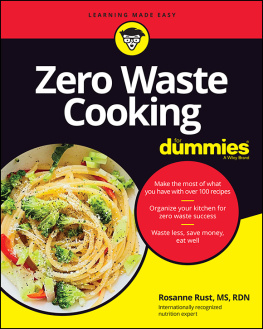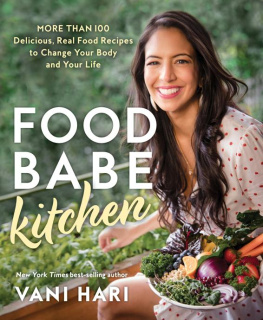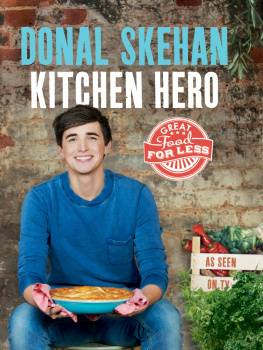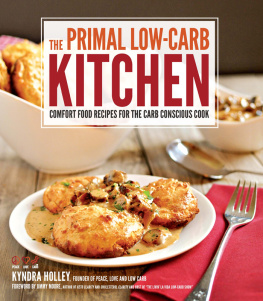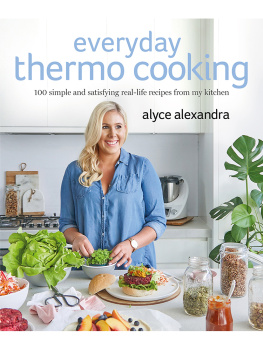Copyright 2010 by Alexandra Zissu
All rights reserved.
Published in the United States by Clarkson Potter/Publishers, an imprint of the Crown Publishing Group, a division of Random House, Inc., New York.
www.crownpublishing.com
www.clarksonpotter.com
CLARKSON POTTER is a trademark and POTTER with colophon is a registered trademark of Random House, Inc.
Library of Congress Cataloging-in-Publication Data
Zissu, Alexandra.
The conscious kitchen / Alexandra Zissu. 1st ed.
p. cm.
Includes index.
1. Green movement. 2. Food habitsMoral and ethical aspects. 3. Natural foods. 4. Sustainable living. 5. Environmental responsibility. I. Title.
GE195.Z58 2010
641dc22 2009032769
eISBN: 978-0-7704-3424-3
v3.1
To breakfast, lunch, and dinner
contents
INTRODUCTION
A TALE OF TWO SATURDAYS
Saturday #1
Its a bittersweet moment when the asparagus, strawberries, and peas fade from the farmers market and the first-of-season peaches, nectarines, blueberries, and summer squash loudly take their place. Its hard to get too wistfulcorn and tomatoes are mere weeks away. Things are looking good, even for next winter, because my tiny neighborhood farmers market has added some diverse and lovely new vendors who will be here year-round, supplying cheese, maple syrup, tender salad greens (oh, the sunflower sprouts!) and perfect pastured eggseven in brutal and unkind February. Other new additions include farmed trout (smoked, too) and Long Island wines. Just a few years ago, I always had to supplement at the supermarket on the way home from this market. No longer. And the place is hopping! People seem, for the most part, to have their own reusable bags! A neighbor and I stop to exchange news of a butcher who come fall will open shop nearby with grass-fed and local offerings. My bagsand heartfull, I head home to add my bounty to my already farm-share-stuffed fridge. Im elated, hopeful. I cant wait to eat lunch.
Saturday #2
Were spending the weekend away at the beachimpromptu. Although we often bring some of our food with us when traveling, we havent this time, and our preschooler is getting cranky-hungry. I walk into a supermarket the size of a football field and easily lose an hour, dazed by choice, reading label after ingredient list after label, and further dazed that despite the monumental amount of offerings, Im finding few conscious choices at all. People pass me pushing carts piled high with packaged, processed foods, shrink-wrapped family packs of industrially raised chicken parts, cases of bottled water. I pause before the fish counter and am amazed by the international seafood scene announced by the Sri Lanka, China, Chileeven though were a mile or so from the Atlantic Ocean. I make do and leave. I am depressed and discouraged.
These food highs and lows hit me often. I get all excited about the wonderful advances that are being made in the eco-food arena, and about how large the movement seems to be growingthe Obamas have an organic garden on the South Lawn! What could be huger than that?only to be slapped back to reality. Ecologically farmed and raised food isnt widely available; the movement is too small, and often misunderstood. But it desperately needs to grow biggerfor human health and the health of the planet. As the following chapters explain, the conventional on any food packaging doesnt mean a thing. It implies plenty, but theres nothing in place to prove or uphold the implication (though in 2009 the USDA began the process of defining it for meat and poultry only). Basically, use of the word natural is pure marketing.
This sort of education is hard to swallow, and its also hard to come by. If we all collectively knew more about those shrink-wrapped chickens (see chapter three), we would vote very differently with our dollars. Even at my most discouraged, I believe this to be true. Im not distracted by other peoples supermarket grocery carts because Im judging what theyre buying. On the contrary. Im trying to figure out how we all came to a point where were willingly ingesting things we know so little about, and that are so incredibly harmful to our bodies and our earth. Im distracted trying to figure out how to educate people in the most compelling and least off-putting way.
Because heres the thing: Our everyday food choices have the capacity to change the world. Demand influences supply. So it makes sense to choose wisely, consciously. The factory farming of cattle (and other animals) is an energy-intensive, inhumane, earth-polluting, greenhouse gasreleasing endeavor. Once you learn that, how hard is it to replace that burger with a smaller one that came from a well-treated grass-fed animal? Not very. Buying grass-fed beef is the greatest thing we can do for the planet and it makes up for other things, says Alice Waters, chef, food activist, and godmother of all things local and organic. Buying a hybrid car is nothing compared to eating grass-fed beef and not eating very much of it. If more people heard this sort of information, theyd be more inclined to shop smarter.
But, alas, most eaters dont know enough about the horrors of conventionally raised food to want to make the switch. Or they dont want to think about it. Or maybe they do want to think about it, and care deeply about it, and even have dog-eared copies of Michael Pollans very dog-ear-able recent books on the subject (Omnivores Dilemma, In Defense of Food), but still cannot figure out howor whereto find the better versions of what is currently in their fridge. Who really has time to read sliced-bread ingredients for fifteen minutes at the supermarket on a vacation weekend, let alone during a weekly grocery run?
Thats where The Conscious Kitchen comes in. Its my attempt to provide any eco-interested eaterfrom the newbie just going to her first farmers market to the diehard looking for extra tipswith the education needed to make the best decisions in any venue, from convenience store to supermarket to farmers market. The following pages are a road map for how to locate and make sense of the avalanche of green choices in the marketplace and how to make choosing the best possible items less work, not more.
Before I elaborate, a few crucial thoughts:
Conscious food is for everyone. It is not holier-than-anything, judgmental, or elitist. In fact, its common sense to want to purchase, support, and eat food that is healthiest for all involved. If anything, its neighborly.
). It can actually save you money.
Embrace your kitchen. You dont need fancy cooking skills, but you do have to be able to turn your thoughtfully sourced ingredients into meals. Also, you need to know how to substitute in-season ingredients in any recipe that calls for out-of-season items, or for items that dont grow at the same time in the same climate. The following pages have simple tips and recipes to help you do both.
Maintaining a conscious kitchen goes beyond food. It involves employing energy-efficient appliances (see ).
Every little bit helps. Doing any amount of what I suggest in the following pages can make a difference. No matter how far you take this personal journey, some is better than none.
Conscious food is better-tasting food. Nothing beats the flavor of first-of-the-season sweet peas, crispy kirby cucumbers, and cherry tomatoes off the vine.



